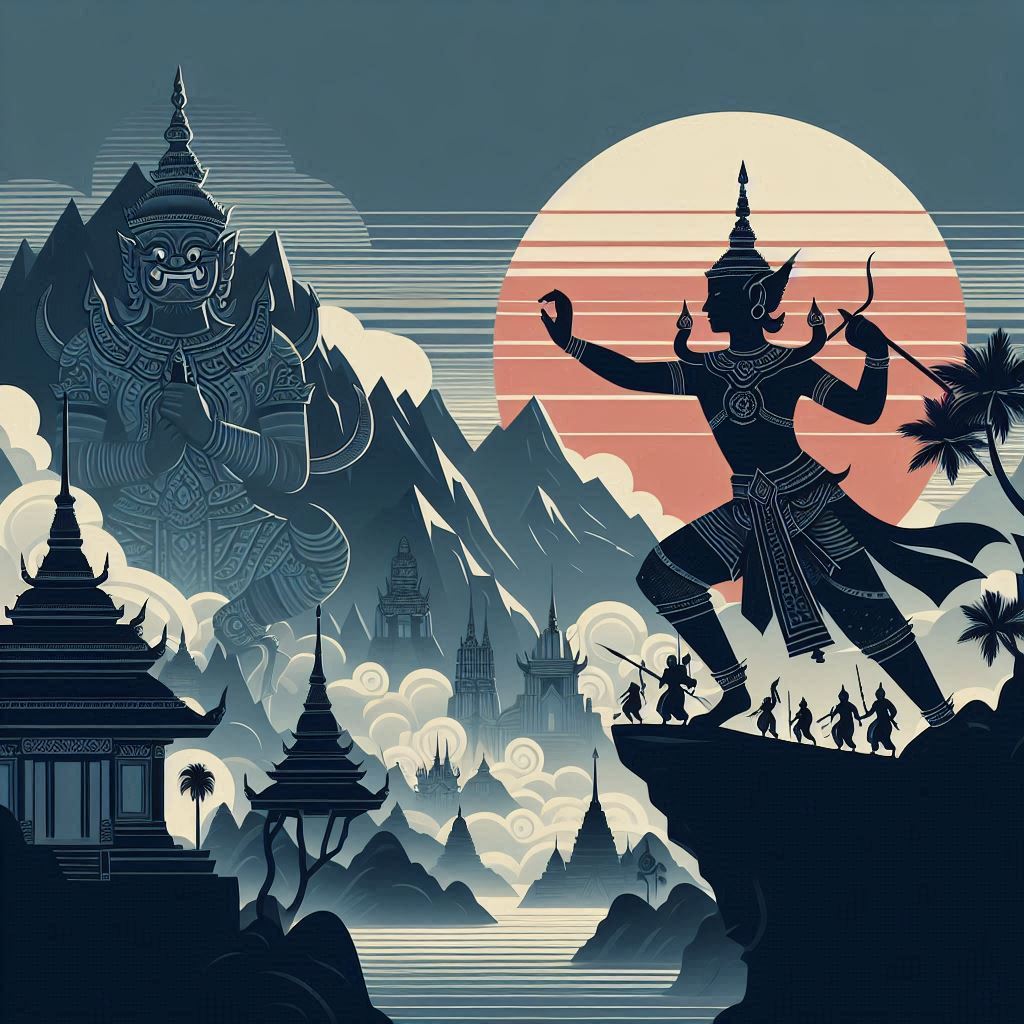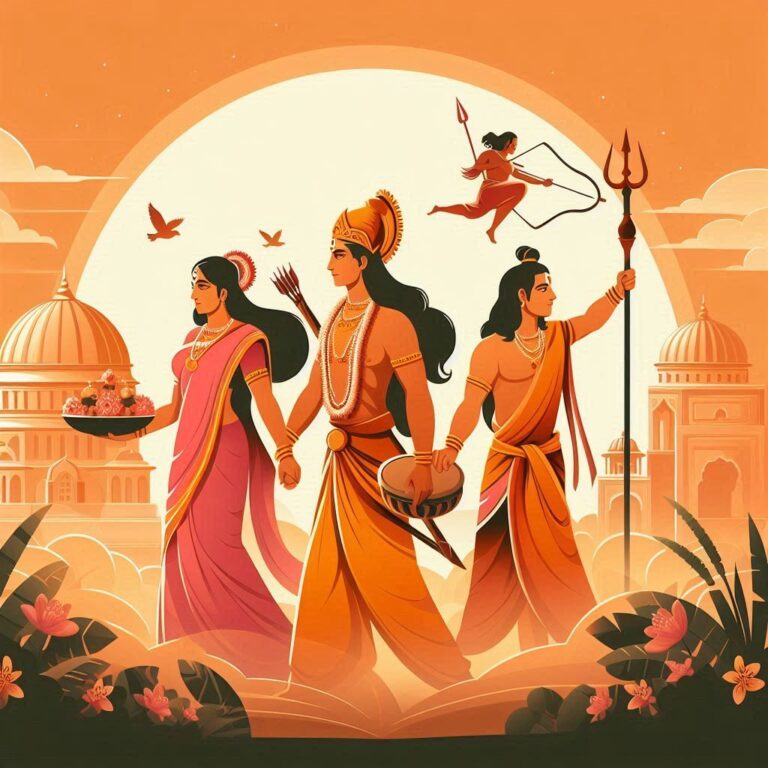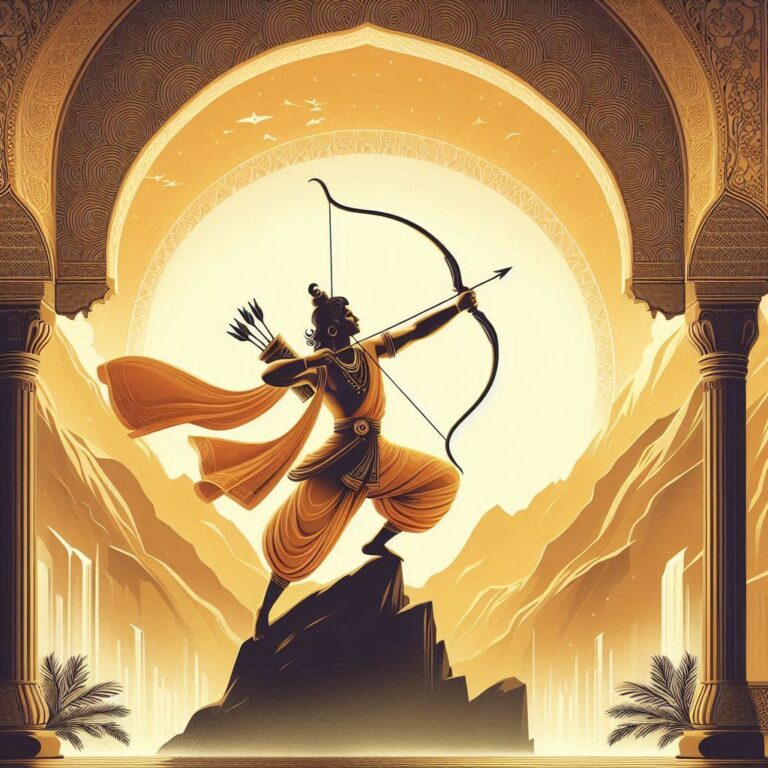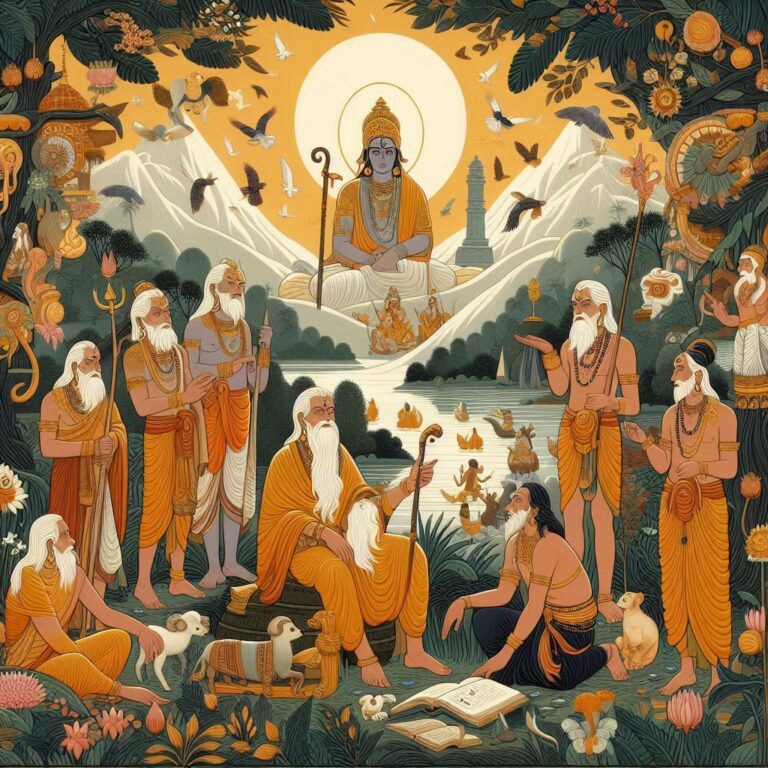Ramayan’s Enduring Influence Across Southeast Asia’s Cultures
The Ramayan’s Impact in Southeast Asia
The Ramayan—an epic tale woven with adventure, devotion, and moral dilemmas—has transcended the boundaries of Indian culture, casting its long shadow across Southeast Asia. Countries like Thailand, Indonesia, and Malaysia have brilliantly adapted and transformed the elements of this ancient narrative. But what makes the Ramayan so enticing that it found a cozy home in lands far from its origins? Let’s dive deep into the threads that stitch the Ramayan with Southeast Asian cultures!
The Essence of Ramayan
First, let’s set the stage. The Ramayan, penned by Sage Valmiki, is an epic that tells the story of Lord Rama’s journey to rescue his wife, Sita, from the demon king Ravana. It explores themes of duty (dharma), righteousness, and the eternal struggle between good and evil. But it’s not just a story; it’s a treasure trove of ideals, values, and reflections on life. As one might think, what could possibly resonate in various cultures? Let’s find out!
The Spread of Ramayan: A Historical Context
The popularity of the Ramayan didn’t just stop at India’s borders; it traveled through trade routes and cultural exchanges. Buddhism, which originated in India but flourished across Asia, played a significant role in this dissemination. By the time traders, priests, and travelers made their way to Southeast Asia, they also brought along the narratives, philosophies, and cultural practices from the Indian subcontinent.
How then did these stories transform in each region? Let’s pinpoint a few countries where the Ramayan has flourished and adapted dramatically.
Thailand: A Royal Heritage of Ramakien
In Thailand, the Ramayan is known as Ramakien (รามเกียรติ์), and it traces a remarkable transformation of the storyline. The central themes remain, but there’s a unique Thai flavor.
Ramakien: Royal Influence
Originally adapted for the Thai royal court, Ramakien amplifies the moral virtues associated with the conduct of kings and the responsibilities they bear. The epic is enshrined in the Emerald Buddha Temple, where exquisite murals narrate the story. The grand Khon dance, performed in elaborate costumes, brings these characters to life.
Imagine walking into a palace draped with opulent artwork and being mesmerized by dancers embodying divine beings. Isn’t it fascinating how the grand narrative of one culture can metamorphosize into a celebration of another?
Sholakas: Thai Adaptations
Here’s a beautiful shloka reflecting the awe of the Ramakien:
राम रजत वंगा तनु धात्री।
Ram Rajat Vanga Tanu Dhatri.
(Transliteration: “Rama’s silver and royal form is like a mother’s embrace.”)
Morality and Values
The Ramakien places significant stress on morality, sakti (power), and how duty is to be upheld even amidst challenges. Characters like Hanuman showcase loyalty. But, do you ever wonder why tales of courage and valor had such a stronghold?
Influence of Buddhism in the Thai Ramakien
Interestingly, Buddhism interlaces with Ramakien, echoing the virtues of compassion and mercy. The coexistence of these values creates a culture where spiritual and moral teachings are beautifully intertwined.
Indonesia: The Wayang Kulit and Beyond
Jumping over to Indonesia, the Ramayan finds expression through its famed Wayang Kulit (shadow puppetry). This traditional art form crafts a visual spectacle representing the epic’s grand adventures.
A Cultural Showcase
Do you even realize how a simple story can give rise to a detailed art form? The intricate leather puppets narrate the Ramayan during festivals and ceremonies. It’s not just about the shadow-play; it’s about storytelling—a communal experience that draws families and communities together.
Dohas: Indonesian Interpretations
संगति सम्राट सबके भाल।
Sangati Samrat Sabke Bhaal.
(Transliteration: “Unity is the crown for all.”)
The Legacy of Hindu Influence
In Indonesia, especially on the island of Bali, the Ramayan integrates with local customs and beliefs. Balinese Hinduism embraces many narrative elements, fostering a dual identity—the blend of indigenous and Hindu practices nurtures the rich tapestry of Indonesian culture.
Malaysia: The Rise of the Ramayana
Now, let’s hop on to Malaysia. Here, the Ramayan’s essence evolves into Hikayat Seri Rama—a classic adaptation that not only retains the core story but reflects societal norms and values prevalent in Malaysian culture.
Cultural Fusions
In Malaysia, the Ramayan narrative merges with local folklore, illustrating the adaptability of the epic. The performance arts here encompass dance forms like Mak Yong, using elements from Ramayan to depict deeper human emotions. Ever seen a traditional dance that narrates an epic tale? It’s pure cultural poetry in motion!
Dohas Reflecting Malaysian Sentiments
छोटी खेती, बड़ी बातें।
Chhoti Kheti, Badi Baaten.
(Transliteration: “Small farms, big tales of wisdom.”)
Shared Morals Across Regions
The shared morals across these adaptations remind us of the universality in struggles—all of us face challenges! Isn’t it comforting to know the lessons learned by those in Thailand and Indonesia can resonate with us today?
Other Influences in Southeast Asia
While Thailand, Indonesia, and Malaysia showcase prominent adaptations, the Ramayan also expands its reach into various forms in Laos, Cambodia, and the Philippines.
Laos: The Phra Lak Phra Lam
In Laos, the tale takes on new dimensions through Phra Lak Phra Lam. The unique portrayal highlights loyalty and familial bonds, yet another testament to the narrative’s rich adaptability.
Cambodia: The Reamker
Cambodia honors the Ramayan through the Reamker, where the thematic essence is preserved, but characters and narratives are uniquely local. How cool is it that these narratives evolve while still retaining their deeper message?
Philippines: A Dance of Legacy
In the Philippines, while less directly linked, remnants of the Ramayan can be seen in dance and storytelling traditions, echoing the shared history of trade and cultural exchange.
The Enduring Influence of Ramayan
Overall, the Ramayan’s journey through Southeast Asia showcases how stories can adapt without losing their essence. It’s a hearty reminder of shared humanity. In a world that often feels divided, these stories connect us, bridging gaps across cultures and traditions.
The Cultural Legacy
Not only do these adaptations showcase artistic interpretations, but they also cultivate shared values, serving as a collective heritage. They offer moral guidance and showcase the rich diversity within a common narrative.
Conclusion
The Ramayan has woven itself into the very fabric of Southeast Asian culture. From puppet shows in Indonesia to royal performances in Thailand and adaptations in Malaysia, this ancient epic continues to resonate, influencing values, morals, and artistry. Amidst modernity and change, it holds a timeless relevance—uniting hearts through tales of love, sacrifice, and duty.
So, the next time you come across a performance or retelling of the Ramayan, appreciate not just the story, but the cultural bonds that continue to thrive across borders. Isn’t it amazing how one narrative can create a ripple effect of creativity, traditions, and values?
FAQs
1. How did the Ramayan influence Southeast Asian cultures?
The Ramayan traveled through trade and cultural exchanges, leading to its adaptation in various forms like dance, theatre, and artworks across countries.
2. What is the Ramakien?
The Ramakien is Thailand’s version of the Ramayan, reflecting local culture and royal values while retaining the core narrative.
3. What role does Wayang Kulit play in Indonesia?
Wayang Kulit is a traditional shadow puppetry art form that narrates the Ramayan, bringing the characters and stories to life in Indonesian culture.
4. How does Malaysia’s Hikayat Seri Rama differ from the original Ramayan?
It reflects local norms and merged with Malaysian folklore while retaining the essential storyline of the Ramayan.
5. Why does the Ramayan continue to be relevant today?
It addresses universal themes of duty, love, and righteousness, providing moral guidance that resonates across cultures even in contemporary times.








